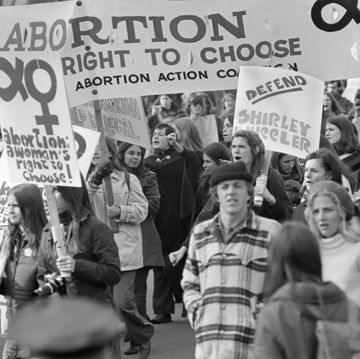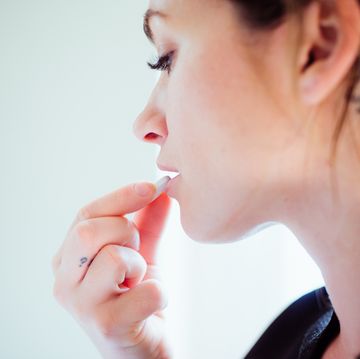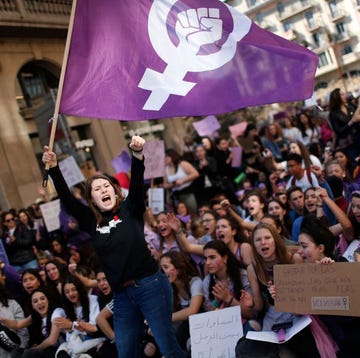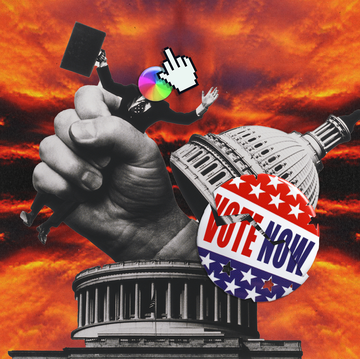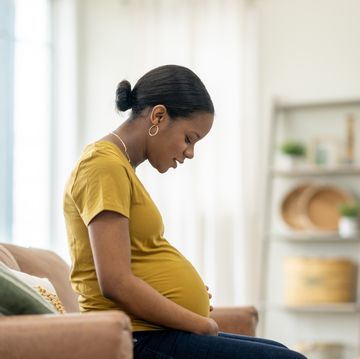Esché L. Jackson ran away repeatedly as a kid to escape the abuse in her home. By 14, she was homeless. "No one asked my why I was running or tried to save me from what I was running from," the USC graduate said on a conference call. "Instead I was locked up."
A new report by the Human Rights Project for Girls, the Center on Poverty and Inequality at Georgetown Law, and the Ms. Foundation for Women shows that Jackson's story isn't unique. As many as 80 percent of girls in the juvenile justice system are victims of sexual or other physical violence, and instead of getting the help they need, they're being incarcerated. The criminalization of girls, and girls of color in particular, creates what the report calls a "sexual abuse to prison pipeline," where victimized girls are punished rather than rehabilitated.
"Victims end up behind bars because they are being criminalized for behaviors that are a direct result of child sex abuse, not because girls are becoming more violent," Teresa Younger, president and CEO of the Ms. Foundation, said on the conference call about the report. "The result is that girls who are in need of healing and therapy and assistance are repeatedly prosecuted and forced to relive those traumas while their abusers often remain free."
Girls who are abused often respond by running away, abusing substances, or engaging in acts of truancy, but instead of seeing those acts as signs of trauma by children who need help, American law enforcement treats them as crimes. For girls, sexual and physical abuse are primary predictors of incarceration; girls are also targeted by law enforcement when their behavior deviates from acceptable standards of femininity, such as being docile and passive. Much of the national and political attention to juvenile incarceration has focused on boys, and especially boys of color, who are incarcerated at higher rates than girls. But girls are the fastest-growing segment of the juvenile justice system population, and their specific needs are routinely ignored.
Law enforcement also routinely targets girls who have been trafficked into the sex trade, treating them as "prostitutes" rather than trafficking victims. Girls as young as 13 can be arrested for prostitution in some states (even though the age of consent in many states is older than 13). The report's authors recommend a change to the law so that minors under the age of 18 cannot be charged with prostitution and instead be treated first as victims.
Girls are increasingly involved in the juvenile justice system, the report says, even though they are not committing an increasing number of crimes. African-American and Native American girls are disproportionately represented in the juvenile justice system, with black girls making up a third of girls who are detained or committed, despite being just 14 percent of the population. Native American girls are 1 percent of the general population, but make up 3.5 percent of population in the juvenile justice system. And according to some studies, LGBT girls make up as many as 40 percent of girls in the juvenile justice system.
"This is an issue of poverty and race discrimination, disproportionately affecting girls of color and who are from low-wage households," Younger said. "Once in the criminal justice system, these girls are continually marginalized and face increasing obstacles."
The number of girls who are sexual abuse victims who are incarcerated varies by state, but remains significant across the country. In Oregon, 93 percent of incarcerated girls have been physically or sexually abused. In South Carolina, it's 81 percent. In Florida, 84 percent.
"One of the ways we respond to child sexual abuse is by incarcerating girls," said Lindsay Rosenthal, a fellow and research associate at Vera Institute of Justice. "It's victim-blaming of the worst kind."
The report makes a series of recommendations, including strengthening the Juvenile Justice and Delinquency Prevention Act, a federal law that sets standards for the juvenile justice system and is up for reauthorization for the first time since 2002, by adding gender-specific and trauma-informed services. The authors of the report also emphasize the dearth of research on incarcerated girls, and how that renders them and their experiences invisible and vulnerable.
As an example of how these changes can affect incarcerated girls, Rosenthal told the story of a girl in a juvenile facility who was immediately branded a "troublemaker" by staff because of her refusal to listen to officers' directions to sit down. Her facility happened to be the site of a pilot program for trauma-informed services, and she was able to answer questions about her health via an iPad, so she didn't have to speak out loud to facility staff. That bit of privacy led her to disclose the fact that she had been raped just before entering the facility and endured such genital trauma that sitting down was physically painful. But when she was able to see a doctor and repair her physical injuries, she came back healthier, happier, and not a "troublemaker" at all.
Follow Jill on Twitter.

Jill Filipovic is a contributing writer for cosmopolitan.com. She is the author of OK Boomer, Let's Talk: How My Generation Got Left Behind and The H-Spot: The Feminist Pursuit of Happiness. A weekly CNN columnist and a contributing writer for the New York Times, she is also a lawyer.




